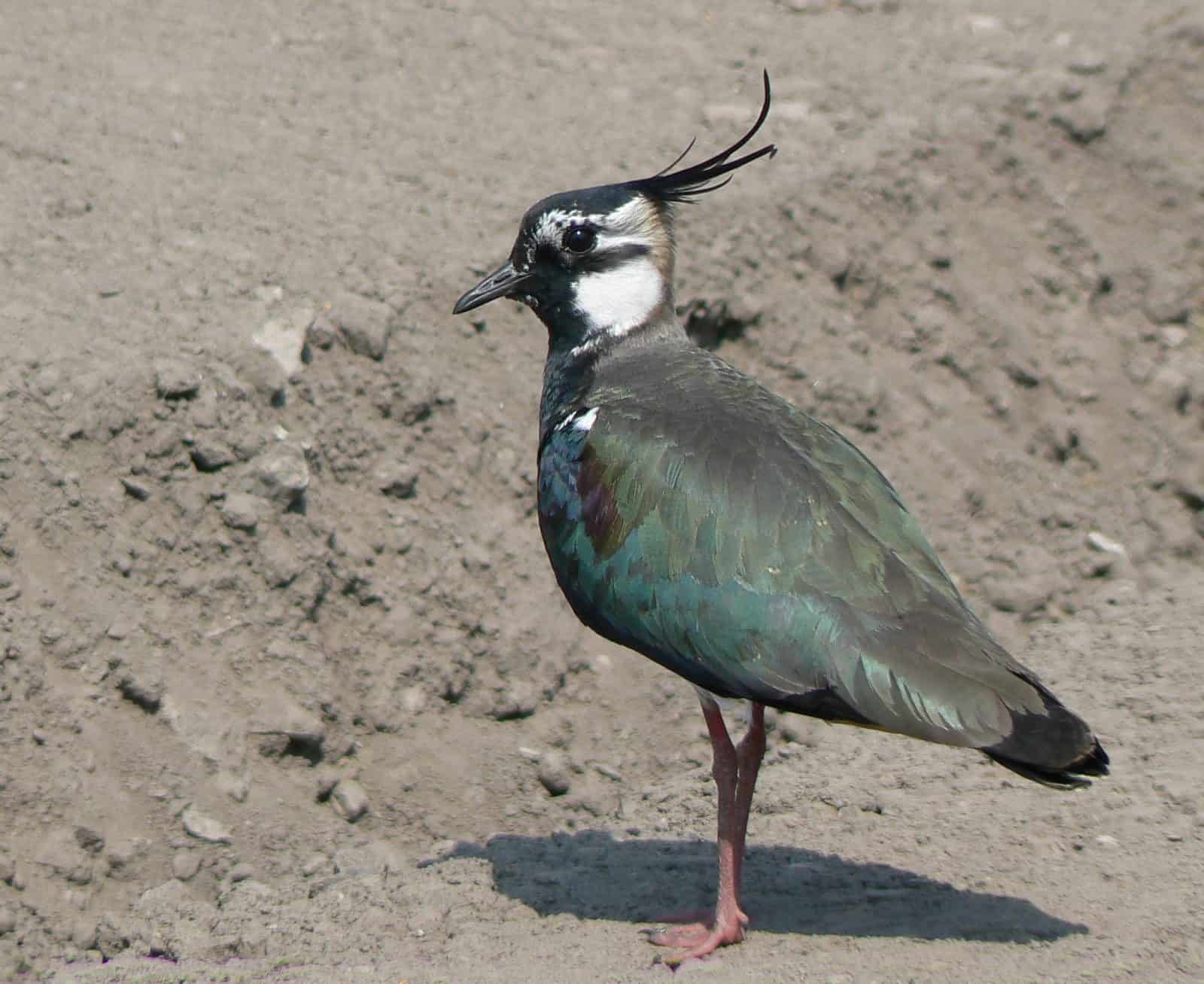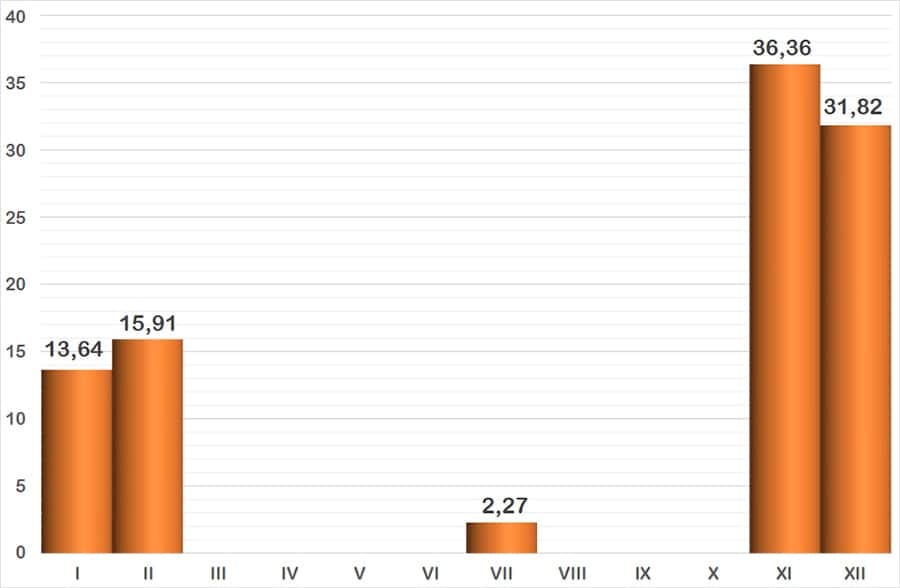It is a large plover and characteristic for being the only one with feathers on its head in the shape of a long crest. Another striking feature is its metallic green back and upper wings, the latter with bluish feathers. On the neck it sports a black bib, which in summer plumage is spreads to its chin, cheeks, forehead and crest.

La imagen es autoría de Eddy Van 3000. Licencia Creative Commons con algunos derechos reservados.
Species 1
Northern Lapwing
Scientific name
Family 2
Taxonomic Affinity Group 3
Phenology 4
As its Spanish name ‘Avefría’ indicates, it is a bird that comes with the cold, it is a wintering characteristic. There may be some small flocks that begin the migratory passage very early, as detected in the ‘Salinas de Poniente’, it is normally directly associated with the winter months.

The graph represents the probability of seeing a species during the year, grouped into months. The vertical axis indicates the percentage value. Each of the bars expresses its value. The horizontal axis represents the months: I = January, II = February, III = March, IV = April, V = May, VI = June, VII = July, VIII = August, IX = September, X = October, XI = November and XII = December.
Observation recommendations
It is easily identifiable, both by its size, similar to that of a pigeon and by its characteristic crest, however, it has been experiencing a reduction in its numbers for years due to the problems in the fields where it nests, where increased pressure and numerous impacts have caused a decrease in population and even problems for the viability of the clutches. Thus, it is becoming increasingly scarce and the flocks smaller, and it is even becoming common to observe them individually.
Observation areas where we can find it
Notes
[1] The names used are from the list of birds of Spain, drawn up by SEO/BirdLife and updated to 2019 (https://seo.org/listaavesdeespana/). The reference is: Rouco, M., Copete, J. L., De Juana, E., Gil-Velasco, M., Lorenzo, J. A., Martín, M., Milá, B., Molina, B. & Santos, D. M. 2019. Checklist of the birds of Spain. 2019 edition. SEO/BirdLife. Madrid.
[2] The taxonomic family to which it belongs is indicated.
[3] Traditionally, waterbirds have been grouped according to their taxonomy or “taxonomic affinity”, i.e., when some birds coincide in certain features that allow them to be classified scientifically, but without leaving the rigour of science, they are put together in these groups so that they can be easily recognised. These groups are the following: Greves (belonging to the Podicipedae family), Herons and Similar (includes the families: Ardeidae -Herons- Ciconiidae -Storks- and Threskiornithidae -Ibises and spoonbills-), Ducks (the whole Anatidae family), Coots and Similar (the family Rallidae corresponding to Rails, Gallinules and Coots), Cranes (also with only one family, the Gruidae), Waders , a heterogeneous group, the most diverse of this classification, includes the families Burhinidae (Stone-curlews), Haematopodidae (Oystercather), Recurvirostridade (Avocets and Stilts), Glareolidae (Pranticole), Charadriidadea (Plovers), Scolapacidae and finally Gulls and Similar (the recently unified family Laridae, i.e. Gulls and Terns).
[4] Phenology studies the relationship between the cycles of living beings and meteorological factors, and in our latitude these factors manifest themselves as variations throughout the year, thus relating the seasons to the birds’ cycles (breeding, migratory journeys, etc.) The graph shows the probability of seeing a bird depending on the month. It uses data from 48 bird censuses carried out between October 2016 and September 2018. The method used is that of a census route with sampling stations, with a total count on the sheet of water.
